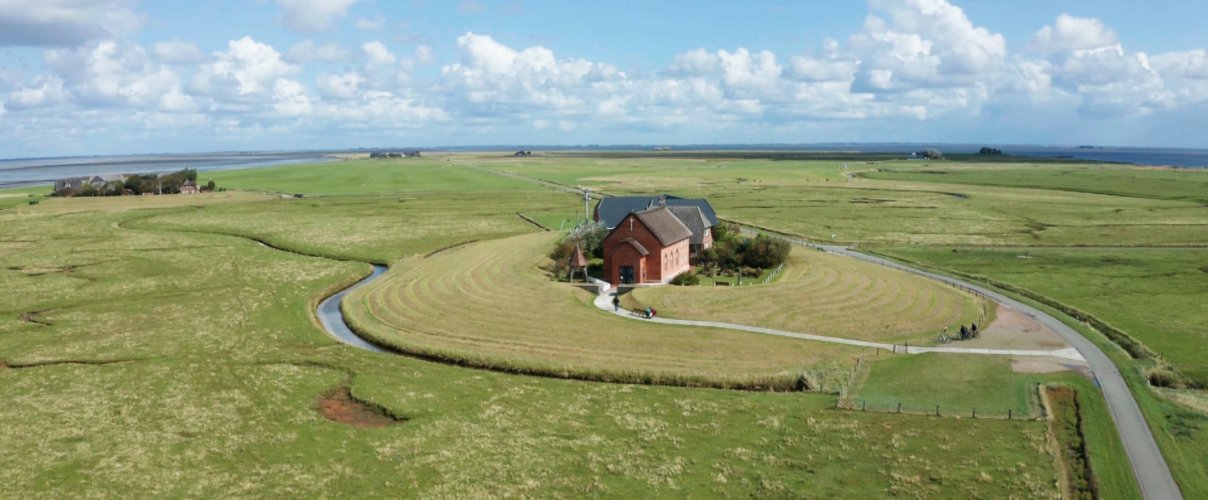A WWF study "Land unter im Wattenmeer" (in German, with the title “Flooding of the land in the Wadden Sea”) shows the dramatic consequences of climate change for the natural values and possible solutions for the Halligen, if sea levels rise faster in the future.
Climate change is a major threat to the Wadden Sea on the North Sea coast. The “Halligen”, special islands in the northern German Wadden Sea, will be strongly affected by the expected acceleration in sea-level rise. Both the Hallig people and nature must be protected from the rising sea. Surprisingly, however, this unique landscape is particularly dependent on regular flooding from the sea. Only through the deposition of new sediments by the flooding of the salt marshes can the Halligen grow upwards with the sea level. But rapidly rising sea levels represent a danger for people and nature. WWF is committed to helping the unique ecosystem of the “Halligen” adapt to the climate crisis. These challenges can only be overcome by the Hallig people, the authorities, nature conservation organisations and many others working together. To this end, WWF has helped to initiate a pilot project for nature-based protection of the Halligen (ECOHAL), together with the Schleswig-Holstein State Agency for Coastal Defence, National Park and Marine Protection (LKN.SH), as part of the EU MANABAS COAST project.
A unique natural and cultural landscape
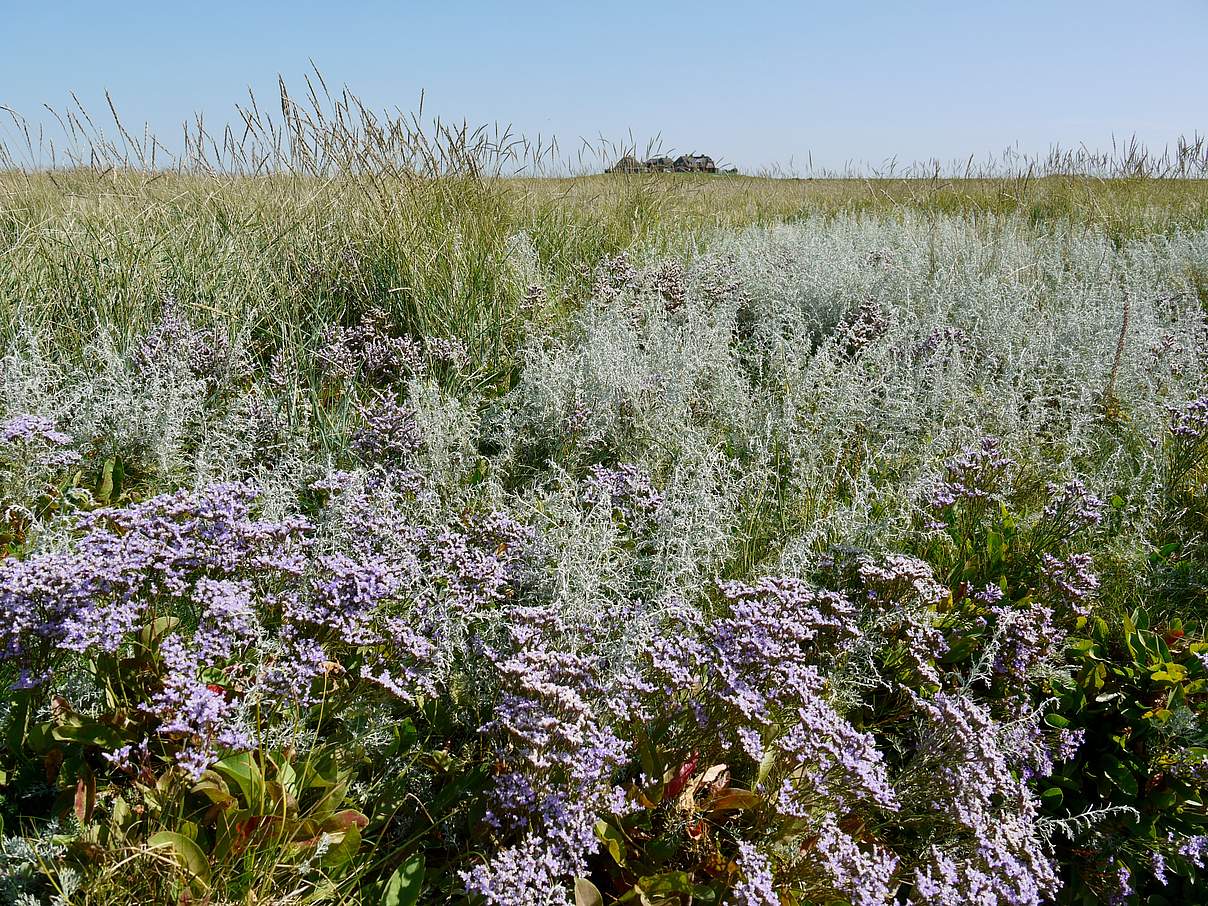
The Halligen in the northern German Wadden Sea (Schleswig-Holstein) are unique in the world. The poet Theodor Storm once called them "swimming dreams". Just under 300 people live together with around 60,000 breeding shorebirds on these small islands in the Wadden Sea. Many oystercatchers, terns, and gulls breed there in high density on about 2,000 hectares of salt marshes. Tens of thousands more wading birds and waterfowl rest here, such as brent geese and red knots, which come from the Arctic and visit the Wadden Sea outside the breeding season.
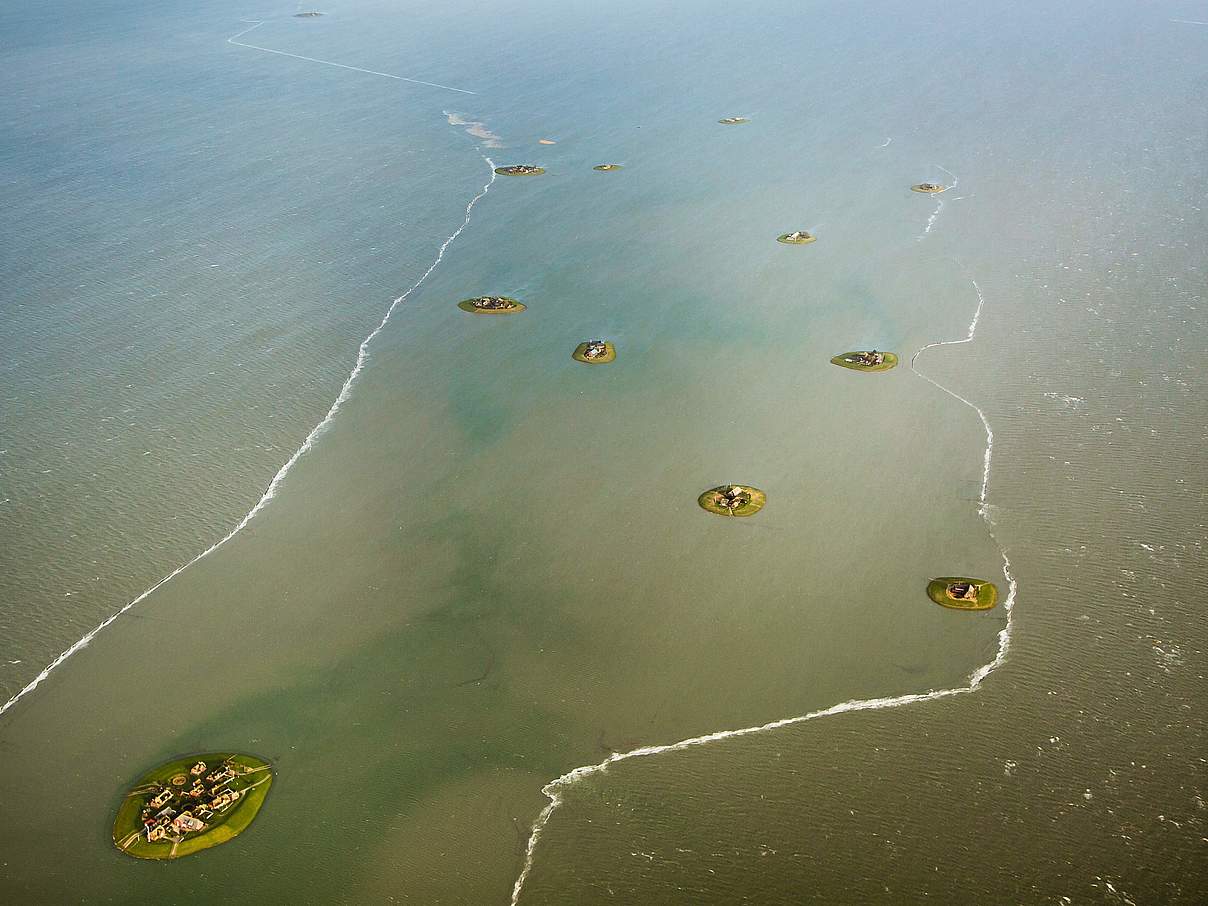
The houses of the people on the Halligen stand on dwelling mounds surrounded by the Wadden Sea National Park and World Heritage Site. The dwelling mounds are little hills on which the houses are protected from flooding. This is because the Halligland is flooded several times a year during storm surges. Protecting people from storm surges was and is therefore a very important goal.
Climate change in the Wadden Sea - saving the Halligen from sea-level rise
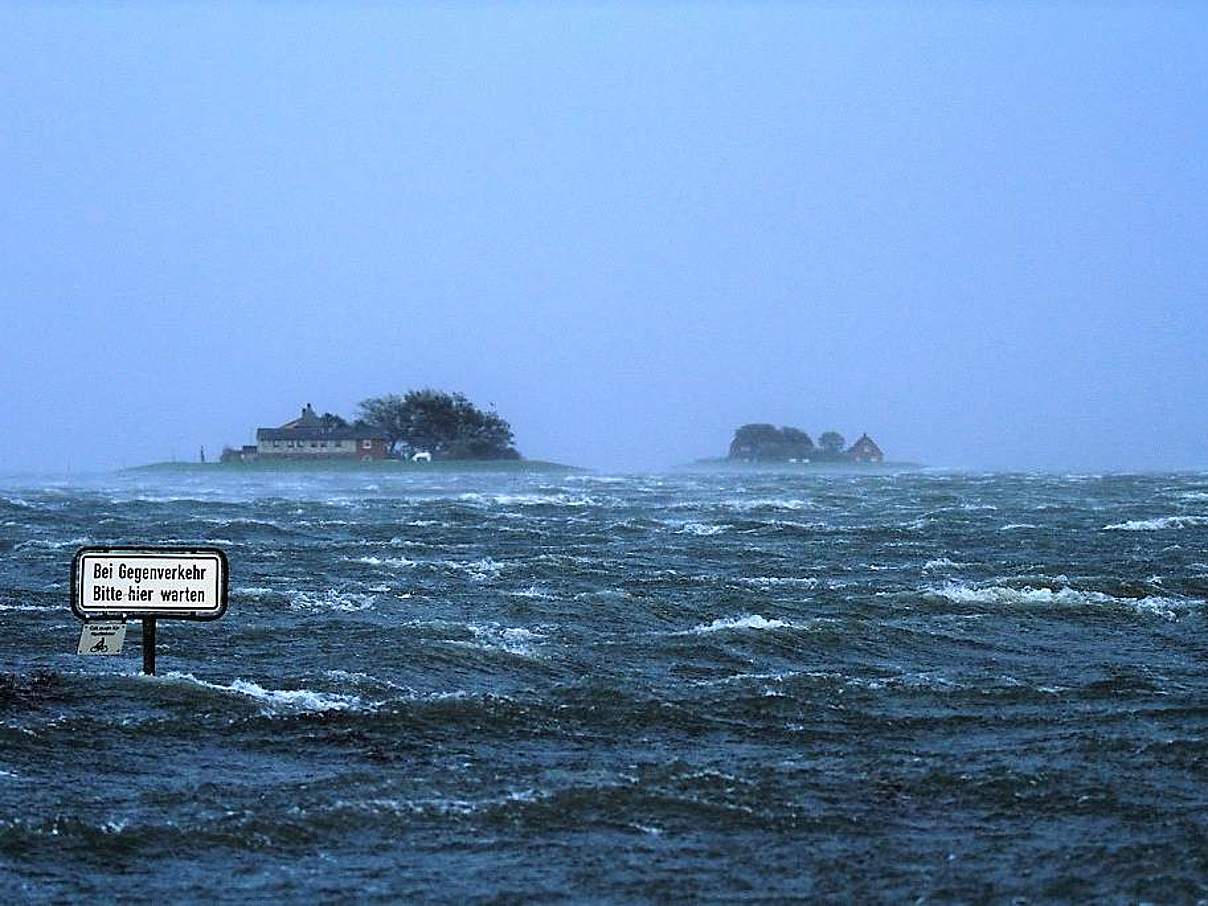
Climate change and the future acceleration of sea level rise are a major threat to the entire Wadden Sea. The Halligen will also be strongly affected by this. The nests of shorebirds are also at risk of becoming victims of more frequent floods. In order to save the Halligen, global climate protection is needed above all, but also additional adaptation measures on the ground.
Tackling the climate crisis
WWF is committed to ensuring that the unique ecosystem of the Halligen can adapt to the climate crisis in the best possible way. If we want to save the Halligen and other affected communities and regions, politicians must make great efforts to combat the climate crisis worldwide and implement the Paris Agreement.
WWF study: "Hallig breeding birds in danger"
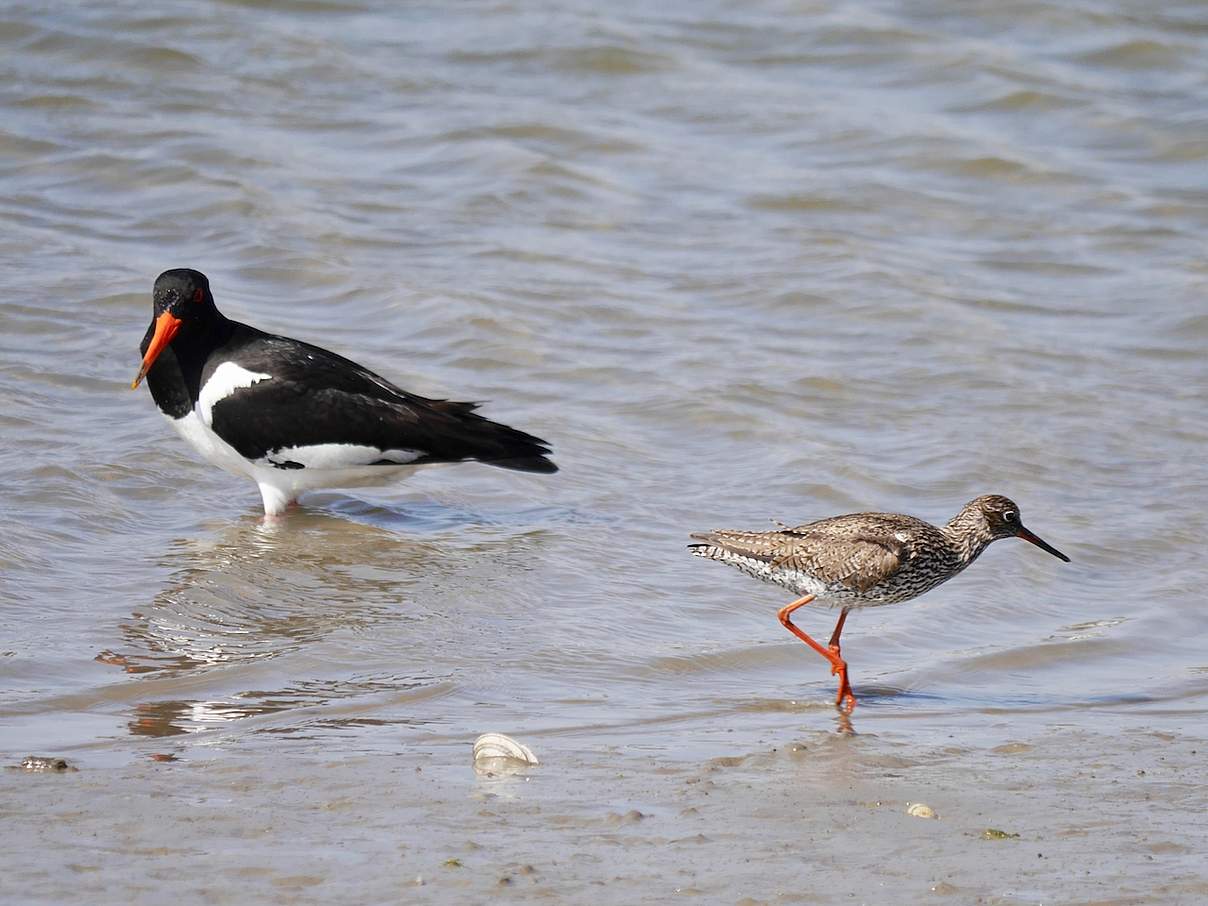
The WWF study "Land unter im Wattenmeer" (in German, with the title “Flooding of the land in the Wadden Sea”) identifies the dangers that exist for the great natural values on the Halligen, above all for the shorebirds that breed there. It looks for ways in which coastal protection and nature conservation can jointly contribute to a nature-friendly adaptation of the Halligen to sea-level rise. In a future scenario, the study shows possible solutions for a typical Hallig.
Adapting to change
WWF is committed to helping the unique ecosystem of the “Halligen” adapt to the climate crisis. The shore line of the Halligen must continue to be secured by coastal protection in the future. However, shore line constructions have been built so high that they prevent sufficient salt water transport and sediment deposition by flooding. Therefore, we propose adaptation measures like modified sluice gates to enhance salt water influence and sediment deposition as well as nature-based shore line protection to reconnect Hallig salt marshes with the surrounding Wadden Sea tidal flats.
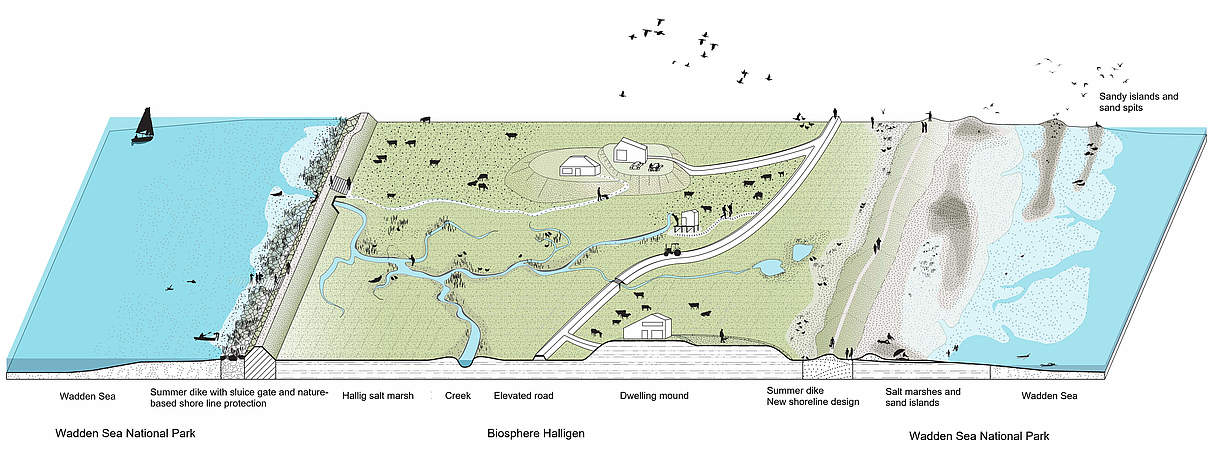
Joint project for nature-based protection of the Halligen (ECOHAL)
The ECOHAL pilot project is being implemented by the WWF together with the Schleswig-Holstein State Agency for Coastal Defence, National Park and Marine Protection (LKN.SH) and many other partners. The aim of the ECOHAL project is ecosystem-based protection of the Hallig shoreline that avoids negative side effects and pays attention to an accelerated sea level rise. To achieve this, the necessary coastal protection of the Hallig shores must be optimally combined with the natural values on the Hallig islands.
Important requirements from a nature conservation perspective are:
- ensure the natural vertical growth of the Hallig areas,
- improve the quality of the salt marshes, and
- reduce the barrier effect of “hard” revetments.
The ECOHALL cooperation is being implemented as part of the EU MANABAS COAST project (duration: 2022 to 2027).

